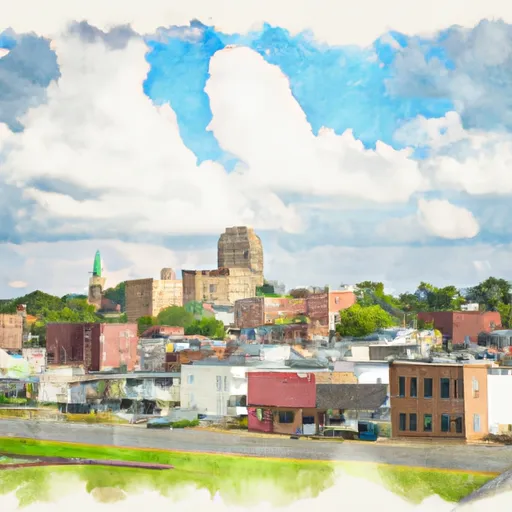°F
°F
mph
Windspeed
%
Humidity











New Bremen, Ohio is a small village located in Auglaize County, in the western part of the state. The climate in New Bremen is classified as humid continental, with warm summers and cold winters. Average temperatures range from around 20°F (-6°C) in winter to 85°F (29°C) in summer, with precipitation distributed evenly throughout the year.
The village is situated near the headwaters of the Miami and Erie Canal, which played a significant role in the region's history. The canal provides a prominent hydrological feature, offering opportunities for boating, fishing, and other water-based activities. Additionally, the area is surrounded by farmland and small lakes, creating beautiful landscapes for outdoor enthusiasts to explore.
New Bremen offers several outdoor recreation opportunities, including hiking and biking trails, as well as parks with facilities for picnicking, sports, and playgrounds. The picturesque scenery of the nearby Grand Lake St. Marys State Park provides additional opportunities for fishing, boating, and camping. The village also hosts community events and festivals that celebrate the local culture and heritage.
Weather Forecast
New-Bremen receives approximately 976mm of rain per year, with humidity levels near 83% and air temperatures averaging around 11°C. New-Bremen has a plant hardyness factor of 6, meaning plants and agriculture in this region thrive during a short period during spring and early summer. Most plants will die off during the colder winter months.
Regional Streamflow Levels
939
Cubic Feet Per Second
462
Cubic Feet Per Second
1,150
Cubic Feet Per Second
47
Cubic Feet Per Second
Nearby Camping
| Camping Area | Reservations | Toilets | Showers |
|---|---|---|---|
| Portage Lake - Waterloo State Rec Area | |||
| Pleasant Lake | |||
| Harrison Lake State Park | |||
| Lake Hudson State Rec Area |



